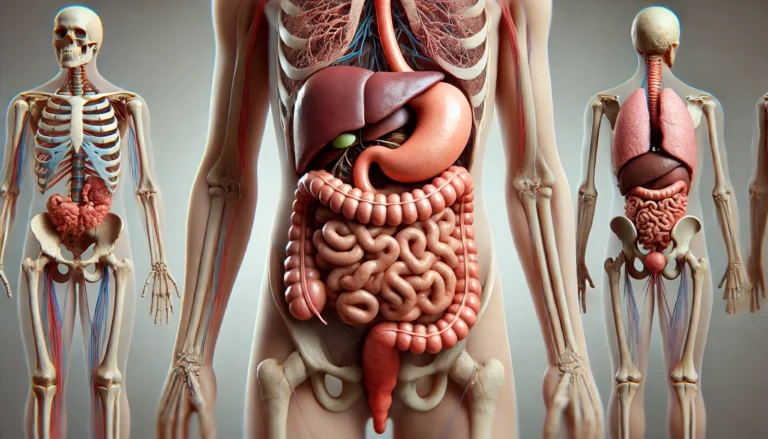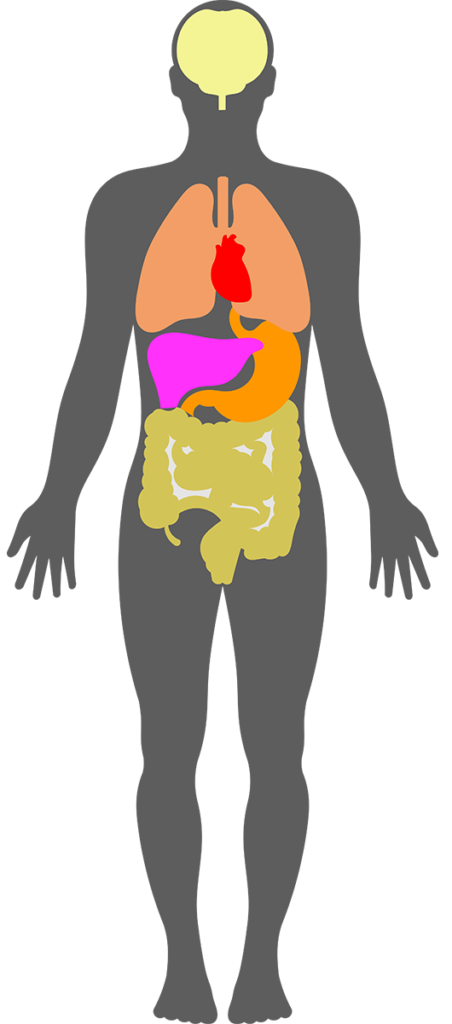NUTRITION
Here you will find the fundamentals needed for setting up your first longevity diet.
Medical disclaimer
This website is for informational purposes only and does not constitute medical advice or professional services. The information provided should not be used for diagnosing or treating a health problem or disease. Individuals seeking medical advice should consult with a licensed physician.
Build habits like bricks: one at a time for a strong foundation.
DIET
We believe that a diet resembling an omnivorous approach is the optimal choice for most people, as it offers a balanced and flexible foundation for nutrition. By incorporating both plant-based and animal-based foods, this diet ensures a wide array of essential nutrients – proteins, healthy fats, vitamins, and minerals – necessary for overall health. Its adaptability makes it well-suited to individual preferences, cultural practices, and specific dietary needs, promoting long-term sustainability and inclusivity.
Our recommendation emphasizes whole, unprocessed foods, low carbohydrate intake, and the elimination of highly processed items. However, it’s important to stress that no single diet fits everyone perfectly. Nutrition should always be tailored to the unique needs, goals, and circumstances of the individual.

WHY MEDITERRANEAN DIET
The Mediterranean diet perfectly embodies this balanced approach. It combines high-quality meats, seeds, healthy fats like olive oil, and a variety of fresh vegetables, creating a nutrient-rich and sustainable way of eating. Renowned for its health benefits, this diet supports overall well-being while embracing natural, wholesome ingredients.
We chose the Mediterranean and Okinawa diets as our longevity diet because they’re delicious, easy to prepare, and packed with flavor. We believe something as essential to our lives as food should bring joy, not just health benefits, so that every meal is both nourishing and enjoyable. With these diets, you get the perfect balance of taste and health benefits – truly the optimum for longevity.
WHEN TO EAT
Chrono-nutrition such as IF, and nutrient timing emphasize the importance of when we eat, not just what we eat, and can help to regulate how much we eat.
EAT LESS
Concepts like ~10% caloric restriction can help longevity by activating cellular repair processes and reducing oxidative stress, helping to slow down aging at the molecular level.
These definitions will help you understand the basics of dieting
CALORIES
Calories represent the energy we get from food, essential for powering life functions.
MACRONUTRIENTS
Macronutrients are the nutritive components of food that the body needs for energy and to maintain the body’s structure and systems. Proteins, fats, and carbs, are the primary nutrients that supply energy and structure to the body.
MICRONUTRIENTS
Micronutrients are essential nutrients required by the body in small amounts for proper growth and physiological functioning. Micronutrients do not provide energy but are crucial for metabolic processes, immune function, and overall health. They include vitamins and minerals.
MACRONUTRIENTS OPTIMAL SOURCE
PROTEIN
Adequate protein intake is essential for adults to maintain muscle mass, one of the key factors in longevity. Incorporating more plant-based, protein-rich foods offers a balanced approach to meeting protein needs while promoting long-term health. Best source: Beef, lamb, lentils, beans, salmon, seafood, whey protein.
CARBOHYDRATES
FATS
Fats are vital for a longevity diet, offering sustained energy, supporting brain health, and aiding nutrient absorption. Healthy fats like those in olive oil, nuts, and avocados help protect the heart and reduce inflammation, promoting wellness for a longer life. Best source: olive oil, avocado, almonds, nuts, fish, seafood.
The Interplay Between Digestion, Nutrients, and the Gut Microbiome
The digestive system is a complex process involving the interaction between human cells and the gut microbiome. This ecosystem of microorganisms plays a crucial role in digestion, metabolism, and the production of key nutrients like vitamin K. A balanced diet rich in nutrients is essential for maintaining a healthy microbial community, as deficiencies can disrupt the microbiome and lead to metabolic imbalances. Disruptions in the microbiome, such as those seen in obesity, can lower microbial diversity and contribute to health issues, underscoring the importance of proper nutrition and microbial balance.
Optimizing nutrient absorption and microbiome health involves understanding how nutrition impacts microbial activity. By improving nutrient density in foods and supporting microbial diversity, we can enhance nutrient bioavailability and improve overall metabolic health. This relationship highlights the importance of aligning dietary choices with a focus on both nutrient and gut health.

Eat a Fiber-Rich Diet: Include plenty of fruits, vegetables, whole grains, and legumes to nourish the gut microbiome and promote diversity.
Avoid Processed Foods: Limit foods high in sugar and unhealthy fats, as they can disrupt microbial balance and reduce diversity.
Incorporate Fermented Foods: Add foods like yogurt, kimchi, sauerkraut, and kefir to your diet to support beneficial bacteria and enhance digestion.
FIBER
Dietary fiber is essential for a healthy body and a longer life. It comes in two types: soluble fiber, which dissolves in water and helps lower cholesterol and regulate blood sugar, and insoluble fiber, which aids digestion and prevents constipation. Both work together to support gut health, reduce inflammation, and lower the risk of chronic diseases. Add more fiber-rich foods like fruits, vegetables, whole grains, and legumes to your diet for a stronger, healthier future!

Together, these two types of fiber are like the perfect maintenance crew for your gut, ensuring everything flows smoothly, efficiently, and without any blockages.
By doing so, they reduce inflammation, improve heart health, and even help with weight management.
Best source of fiber: Spinach, kale, avocado, broccoli, Brussels sprouts, green beans, collard greens, Swiss chard, arugula, zucchini, bok choy, celery, asparagus, snap peas.
THE PRINCIPLES
Follow these nutrition guidelines to support your health and longevity. Simple choices can make big differences.

01 CALORIC RESTRICTION
Stick to ~10% caloric restriction. Don’t forget to still reach nutritional goals in terms of micro, macro nutrients and protein.
02 START FASTING
Start by choosing a method that suits your lifestyle. Popular options include the 16/8 method, 5:2 method, Eat-Stop-Eat, Alternate-Day Fasting. Prioritize nutrient-dense foods to avoid malnutrition.
03 EAT ENOUGH PROTEIN
1.2–2.0 g/kg/day is tailored for active people with ~10% caloric restriction. Additionally Consuming 30–40 grams of protein per meal stimulates muscle protein synthesis optimally.
04 MAKE IT RICH IN VEGETABLES
Stick to the rule one meal at least one green
05 MAKE IT RICH IN FRUITS
Aim for 2–3 servings daily, focus on variety, prioritize whole fruits for fiber, and choose low-glycemic index options.
06 KEEP MACRONUTRIENTS IN BALANCE
Keep it simple at the begining, aim for 45–65% of calories from whole carbs, 10–25% from protein, and 20–35% from healthy fats.
07 AVOID DESTRUCTIVE COOKING
Focus on gentle cooking methods, minimize the use of processed oils, avoid overcooking, limit the use of added simple sugars and salts, incorporate more plant-based ingredients.
08 CHOOSE WHOLEFOODS
Whole foods are natural, unprocessed or minimally processed foods that are free from artificial additives, preservatives, and refined ingredients. The greater the inclusion of whole foods in your diet, the better. Eat high-quality meat, fish, fruits and vegetables to stay healthy.
9 ENJOY MEALS WITH OTHER
Enjoying meals with others supports longevity by fostering social connections, which are linked to reduced stress and improved mental health. It is well known and practiced for ages, especially among blue zones citizens.
CALORIC RESTRICTION – HOW IT WORKS?
To clarify, caloric restriction (CR) does not mean endlessly reducing your calorie intake to unsustainable or dangerous levels. Instead, it refers to moderately reducing calorie consumption compared to typical dietary habits while still meeting your body’s nutritional needs. The goal is to promote health and longevity without malnutrition. Here’s how it works and why it doesn’t lead to „eating nothing”:
01 Stabilizing and Maintenance
When you begin caloric restriction, your body gradually adjusts to the lower calorie intake by reducing energy expenditure (e.g., slower metabolism, more efficient energy use). Over time, weight loss slows down and eventually stabilizes (this is the „stabilization” phase).
Once you reach a healthy body weight, the goal is to maintain that weight with a slightly reduced caloric intake that matches your new, lower energy needs—not to keep restricting indefinitely.
For example, if you once needed 2,500 calories to maintain your weight, you might stabilize at 1,800–2,000 calories depending on your activity level and metabolic rate.
02 FOCUS ON NUTRIENT DENSITY
Caloric restriction isn’t about eating less food overall, but about eating fewer calories from low-nutrient, high-energy foods (e.g., processed snacks, sugary drinks).
You prioritize nutrient-dense foods like vegetables, lean proteins, whole grains, and healthy fats, which provide essential vitamins and minerals without excess calories.
This approach helps you avoid malnutrition and ensures you stay healthy even on a reduced-calorie diet.
03 PERIODIC ADJUSTMENTS NOT EXTREME REDUCTIONS
Caloric restriction doesn’t mean continuing to lower your intake forever. Instead, it involves periodic adjustmentsbased on your body’s needs.
For example, as you lose weight, your calorie requirements naturally decrease (since a smaller body burns fewer calories). You maintain at this lower level rather than continuously cutting.
It’s important to avoid falling into the trap of extreme caloric restriction (which can lead to malnutrition, muscle loss, and metabolic problems).
04 THE GOAL OF CALORIC RESTRICTION
The research on CR is focused on its health benefits (e.g., reduced risk of chronic diseases, lower inflammation, improved metabolic markers) and potential lifespan extension, not perpetual weight loss.
Over-restriction or extreme calorie cutting can be harmful and counterproductive, as it may lead to:
Loss of muscle mass, slower metabolism, deficiencies in key nutrients, increased stress or hormonal imbalances.
DIETING QUESTIONS
01 Does spreading protein across multiple meals matter?
Not significantly. Total protein intake is the key factor for muscle growth and recovery. While spreading protein may have minor benefits, focusing on „optimal” strategies often leads to overthinking small details instead of prioritizing the basics.
02 Will eating more protein make me too muscular as a woman?
No, it won’t. Quality protein intake helps improve the health and quality of your muscles and tissues, not just increase their size. As a woman, it’s physiologically challenging to become overly muscular, and protein supports overall body composition, recovery, and resilience, not bulk.
03 Does the timing of carbohydrate intake matter?
It’s highly individual and cannot be determined solely by studies. If carbs make you feel sleepy, it’s best to avoid eating them during the day. Focus on what works for your energy levels, lifestyle, and goals rather than rigid guidelines.
04 Is there one „best” diet?
There isn’t a single best diet—it’s highly individual. The key is to prioritize sleep and adjust your diet to support it. If your carbohydrate intake, macros, or eating patterns negatively impact your sleep, energy levels, or daytime alertness, tweak them to fit your needs.
For your body, sleep and meeting the right macro requirements are more important than things like fasting, pre-workout meals, or meal timing. Your diet should fit your lifestyle so you can stay consistent—this is what truly matters.
As long as there’s no solid evidence showing that what you’re doing is outright unhealthy and it works for your life and your needs, then do what works for you.
For example, if you have autoimmune conditions and feel great on a carnivore diet, that’s fine. But for most people, this won’t be the most optimal or sustainable solution. Focus on what keeps you feeling good, healthy, and consistent.
SUPERFOODS
Superfoods are nutrient-rich foods, predominantly plant-based, but also including some meat, fish and dairy, that are considered especially beneficial for health and well-being. These foods contain high levels of vitamins, minerals, antioxidants, fiber, and other bioactive compounds. Most popular and accessible are:
Blueberries
Avocado
Spinach
Sweet Potatoe
Seeds
Nuts
Lentils
Turmeric
Ginger
Garlic
Green Tea
Dark Chocolate
Honey
Seaweed
Eggs
Shellfish (Oysters, Clams, Mussels)
Caviar
SOCIAL ASPECT OF EATING
Studies found that social isolation and loneliness increase the risk of early death by 26–32%. In addition, the Blue Zones, regions known for exceptional longevity like Okinawa, Japan, emphasize social eating as part of their cultural practices. Eating with others not only enriches your social life but also aligns with habits that promote physical, mental, and emotional health, all of which contribute to a longer, healthier life.

SUPPLEMENTATION
The triage theory explains how modest deficiencies in vitamins and minerals can significantly impact aging and related diseases. It suggests that, through evolution, the body has developed a mechanism to prioritize the use of limited resources. When there is a moderate shortage, the body retains these nutrients for proteins and enzymes essential for immediate survival and reproduction. In contrast, proteins needed for long-term health maintenance are deprived of these nutrients, leading to increased inactivity and a higher risk of aging-related diseases. This process accumulates over time.
Supplements stand for additional nutrients or compounds that may be missing or insufficient in a person’s diet making it nutritionally incomplete. Caloric restriction is an anti-aging factor but on the other hand can lead to deficiency of some micro and macro elements. That is why proper supplementation is an indispensable part of pro-longevity lifestyle, a system of connected vessels or more of a labyrinth for the inexperienced.
Vitamin D
Vitamin K1,K2
Vitamin C
Vitamin B12,B6,B9
Zinc
Vitamin E
Selenium
Magnesium
Creatine
Probiotics
Omega 3
Protein (Whey/Plant-Based)
The above-mentioned supplements address key factors in healthy aging. However, in the case of anti-aging just keep in mind that the world’s most famous biohackers take over 100 pills daily!
The best way to provide proper nutrition is to suit It for your personal lab tests.
ANIMAL BASED ALTERNATIVE
Animal-based diets vary primarily by the proportion of meat included, with popular examples being keto, paleo, and carnivore diets. The carnivore diet, the most restrictive of these, consists entirely of animal-based foods. It is often praised for its nutrient density, simplicity, and elimination of processed foods and common dietary irritants. Foods like meat, fish, eggs, and organ meats provide highly bioavailable nutrients such as B12, iron, zinc, and vitamin D, which are essential for energy, immunity, and brain health. Organ meats, especially liver, are rich in vitamins A, B12, and folate. By excluding plant-based foods, the diet removes compounds like lectins, oxalates, and phytates, which may hinder nutrient absorption or cause sensitivities. The absence of carbohydrates can stabilize blood sugar and insulin levels, potentially benefiting individuals with type 2 diabetes or metabolic syndrome. Some also report reduced inflammation, improved gut health, and relief from conditions like IBS and autoimmune disorders. Its high protein and fat content promotes satiety, which may aid in weight management. It has even been suggested for individuals exposed to mold toxicity.
However, the carnivore diet has notable drawbacks. It lacks key nutrients like vitamin C, fiber, and phytonutrients, essential for antioxidant defense, gut health, and disease prevention. Long-term adherence may harm gut microbiome diversity due to the absence of fiber. Its restrictive nature can be socially and practically challenging, and frequent frying of foods—a common preparation method—has been linked to cancer risks. There are also concerns about potential cardiovascular risks from high saturated fat intake, though this remains debated. Moreover, there is limited research on the diet’s long-term safety and effectiveness, leaving lifelong outcomes uncertain.
The diet may benefit specific groups, such as those with autoimmune conditions, severe food sensitivities, type 2 diabetes, or chronic inflammation. However, it is generally not recommended for pregnant or breastfeeding women, athletes needing carbohydrates for energy, individuals with kidney disease, or those at risk of cardiovascular issues. Anyone considering the carnivore diet should do so with caution and ideally under professional supervision. Nutrient monitoring and supplementation may be necessary to avoid deficiencies and ensure long-term health. Current literature includes both successful and unsuccessful case studies, but the lack of long-term studies makes the broader implications unclear.
PLANT BASED ALTERNATIVE
A plant-based diet typically falls into two main categories: vegetarian and the stricter vegan diet. It is strongly associated with longevity due to its high content of fiber, antioxidants, vitamins, and minerals, which reduce inflammation, support heart health, and lower the risk of chronic diseases such as cancer, diabetes, and hypertension. Diets rich in fruits, vegetables, whole grains, legumes, nuts, and seeds have been shown to promote healthy aging and may even extend lifespan.
While plant-based diets offer significant health benefits, they also present challenges. Nutrient deficiencies in vitamin B12, iron, zinc, and omega-3 fatty acids—commonly found in animal products—can be a concern. Careful planning is necessary to meet protein and nutrient needs, especially for highly active individuals or those with specific medical conditions. High fiber intake, while generally beneficial, can cause bloating in some people and may slightly limit nutrient absorption in the small intestine.
Despite these limitations, the health benefits of plant-based diets are well-supported by research. With proper planning, supplementation, or the inclusion of fortified foods, plant-based eating can serve as a powerful and sustainable strategy for long-term health and disease prevention.
WHY OMNIVOROUS
A diet resembling an omnivorous approach is considered the best choice for most people due to its balanced and flexible nature. By incorporating both plant-based and animal-based foods, this diet provides a wide variety of essential nutrients, including high-quality proteins, healthy fats, vitamins, and minerals, all critical for overall health. Its adaptability makes it easier to align with individual preferences, cultural traditions, and unique dietary needs, making it a sustainable and inclusive option for long-term well-being.
This is why we recommend an omnivorous diet focused on whole, unprocessed foods, emphasizing low carbohydratesand minimizing processed ingredients for optimal health. However, it is important to stress that diet must be tailored to each individual. Nutrition is not one-size-fits-all, and a personalized approach is key to achieving the best results.
LONGEVITY STARTS WITH KNWOLEDGE
Welcome to health coast – a platform dedicated to providing free, evidence-based resources on health, aging, and wellness. We believe that longevity should be accessible to everyone, grounded in science, and free of hype. Join us and take control of your health journey!
